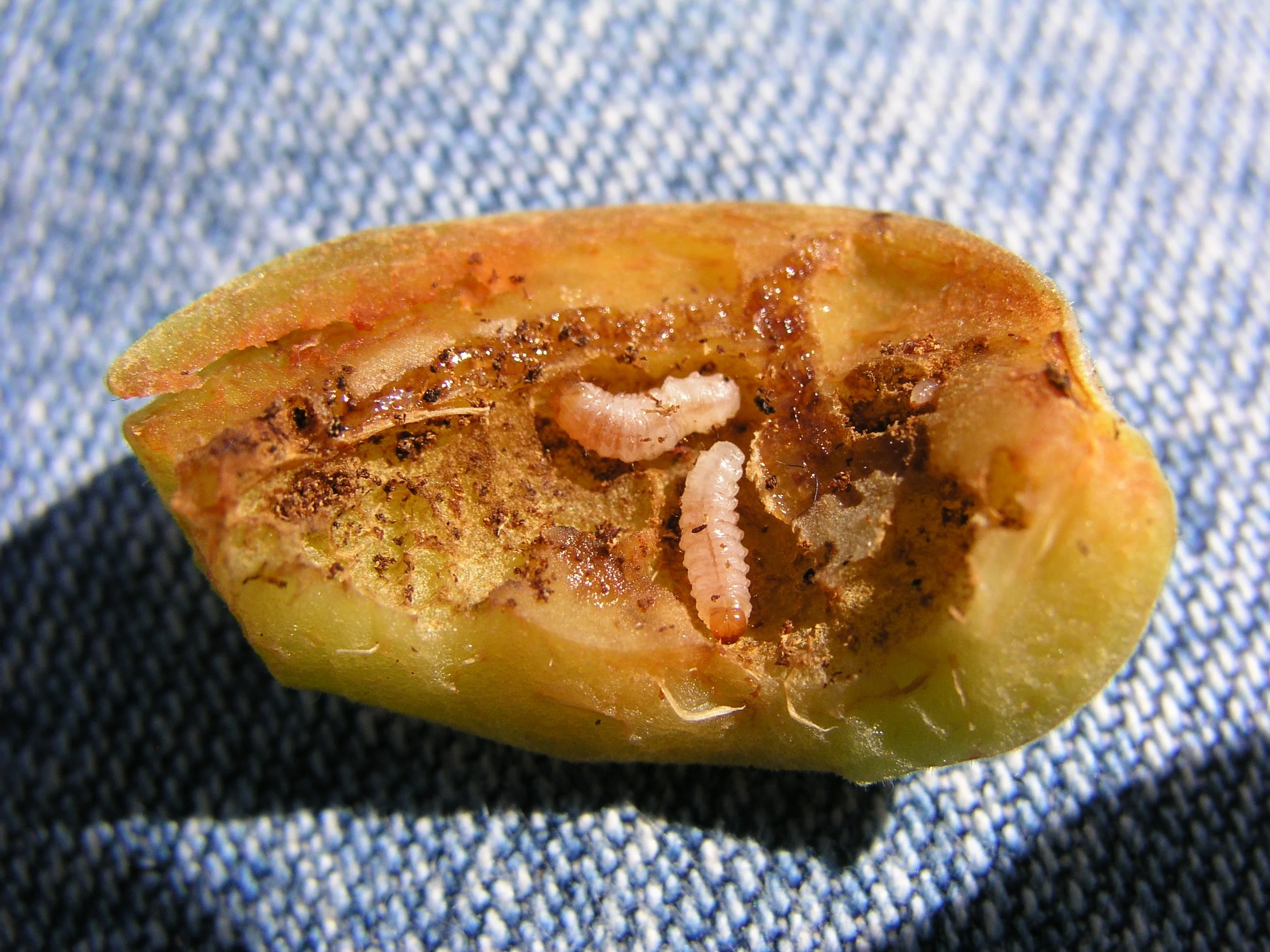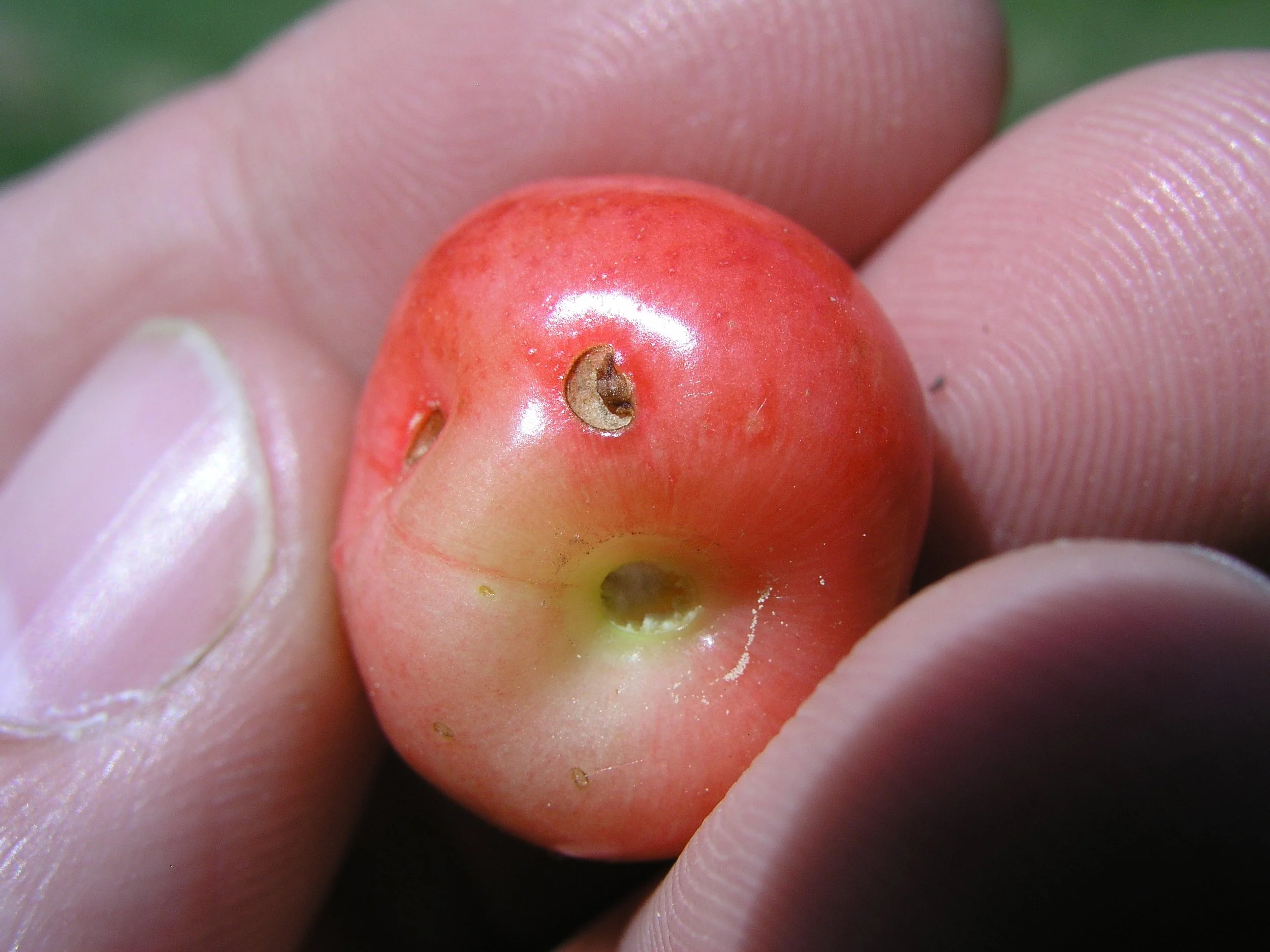Plum curculio (Conotrachelus nenuphar), a snout beetle, is a pest commonly found on stone fruits such as plums, apples, cherries, and peaches. It is one of the most serious pests of peach trees. On apples, it is considered the second most damaging pest after the codling moth.
For region-specific information, please contact your local Giving Grove partner. If you would like more information like this sent straight to your inbox, consider subscribing to The Serving, The Giving Grove’s quarterly newsletter.
Appearance:
Plum curculio beetles are dark brown, about 1/4 inch long, and have a prominent snout, measuring about 1/3 the length of their bodies.
Four characteristic humps on their wing covers.
Adults may overwinter in the soil or in hedgerows near host trees. These adults emerge from their overwintering sites to feed on trees in early spring. Females lay eggs within the fruit.
Damage:
Eggs are laid within the fruit and both adults and larvae feed on the fruit, causing fruit to rot.
Upon closer examination, larvae may be seen feeding near the blemishes.
Infested fruit is often hard and misshapen. The larvae create holes in the fruit skin when they leave the fruit to pupate. These holes are clean-cut and free of frass or webbing.
Fruit may fall prematurely, in late May and June.
The skin of infected fruit has small crescent-shaped blemishes that eventually become swollen and knotted.
Timing:
The larvae that emerge from the developing fruit have grayish-white, worm-like bodies with brown heads and can be seen on infested trees in late summer.
Larvae may feed on the fruit for 2–3 weeks before they burrow into the ground to pupate.
Adults emerge in mid- to latensummer to cause more feeding damage on mature fruit before they overwinter.
Treatment:
Shake infested trees (in backyards with only a handful of infested trees). This technique works best early in the day when the beetles are sluggish. Lay paper or cloth underneath the trees to collect the beetles and dispose of them.
Clean up fallen fruit in which eggs or larvae may be developing.
Cultivate the soil surrounding infested trees in late spring or early summer to destroy pupating larvae that may have fallen to the ground with the fruit or pupae that may be developing in burrows in the ground.
Use bagging method to protect individual fruit
Use a refined kaolin clay (e.g., Surround WP) as a repellent. Building up and maintaining several coats of the clay on fruit as the fruit continues to grow is key to successful use of this product.
Consider the use of parasitic nematodes, specifically Entomopathogenic nematodes (Steinernema spp. and Heterorhabditis spp.), to control the plum curculio at larval stage.
Sources: Missouri Botanical Garden, UK College of Agriculture, Food & Environment, Patrick L. Byers, Horticulture Specialist, and Michael Phillips, “The Holistic Orchard.”





